
When it comes to rock driving, no matter whether you’re confronted by sandstone steps, limestone boulders, a river stone-strewn creek bed or a shaly hill climb, there is a common element: rocks are hard and unforgiving on your vehicle and equipment.
To drive in rocky terrain safely and successfully you need a capable four-wheel drive with plenty of ground clearance, appropriate traction aids and comprehensive vehicle-protection equipment. In addition, you will need to survey the terrain ahead and drive it with the correct technique, and carry appropriate vehicle recovery gear in case things don’t go to plan.
Here’s our guide to becoming a rock star.
The right vehicle
When it comes to vehicles that work well in rocky terrain, common characteristics include ample ground clearance, long suspension travel, effective traction aids, minimal front and rear overhangs, decent low-range gearing, an engine that makes strong torque from low revs and, most importantly, the right tyres.
Rocks are hard, abrasive and many of them have odd shapes with sharp edges, and these can be hell on tyres; so it’s vital when driving in rocky terrain that your vehicle is fitted with Light Truck (LT) construction tyres. Unlike the Passenger (P) rated tyres that many standard 4x4s come with from new, LT tyres have a much tougher construction, with multiple layers across the tread face and in the sidewalls, which makes them more resistant to damage driving in rocky terrain.
Whether you opt for all-terrain or mud-terrain tyres is not so important for rock driving, but selecting an LT construction tyre is. You can tell the difference between a P-rated tyre and an LT tyre by looking at the markings on the sidewall (see boxout ‘Tyre Markings on page 132’).
When clambering over rocky terrain you don’t want the underside of your 4x4 grounding on hard rocks, and the best way to avoid this is to ensure the vehicle has plenty of ground clearance. In the case of vehicles fitted with live axles front and rear, the diff housings will be the lowest points, and the only way to increase clearance under these is to fit larger diameter tyres or, in extreme cases, portal axles.

Nevertheless, a raised suspension will make it less likely for other underbody components to ground on rocks, such as the lower edge of the radiator, the engine sump, the transmission and the transfer case, as well as body components like the vehicle’s sills and front and rear bars.
When it comes to ground clearance, vehicles with independent suspension, or a combination of an independent front suspension (IFS) and a live-axle rear, also benefit greatly from the fitment of a raised suspension and larger diameter tyres.
Another benefit of well-engineered aftermarket suspension systems is they provide additional wheel travel, which means your vehicle will be less likely to lift a wheel off the ground when clambering over uneven, rocky terrain, maximising available traction.
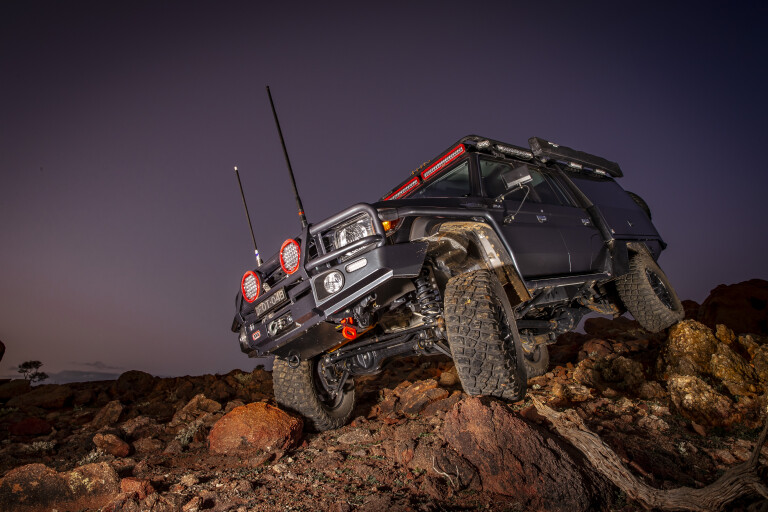
Driving too fast over rocky terrain is a sure-fire way to damage your vehicle, so you really want to drive as slowly as you can and only as fast as you need to, which is why you want a vehicle with good low-range reduction. This will allow you to crawl over obstacles at a snail’s pace while maintaining enough engine revs to prevent stalling in the case of vehicles with a manual gearbox.
While you are unlikely to stall the engine of a vehicle with an automatic transmission, low overall gearing is still beneficial, giving the driver more control at slow speeds and minimising the strain on mechanical components.
Finally, a vehicle with an engine that delivers peak torque low in the rev range is better suited to crawling over rocks at slow speeds than an engine that needs lots of revs to deliver peak output. The idea when rock driving is to keep progress smooth and slow.
Protection equipment
Even with big tyres and a massive suspension lift, if the terrain is gnarly enough there is still a good chance the underside of your vehicle will ground on rocks, which is why you need decent underbody armour to protect vital mechanical components and body work.
Up front, a decent bash plate should provide protection for the radiator, steering components, engine sump, gearbox and transfer case. It needs to be manufactured from thick enough material (usually steel but sometimes alloy) to provide good protection, but it should also be designed in such a way that it doesn’t overly reduce ground clearance or impinge on the vehicle’s cooling system. It should also be securely mounted to the vehicle’s chassis at various points so it can handle big hits when driving over rocks.
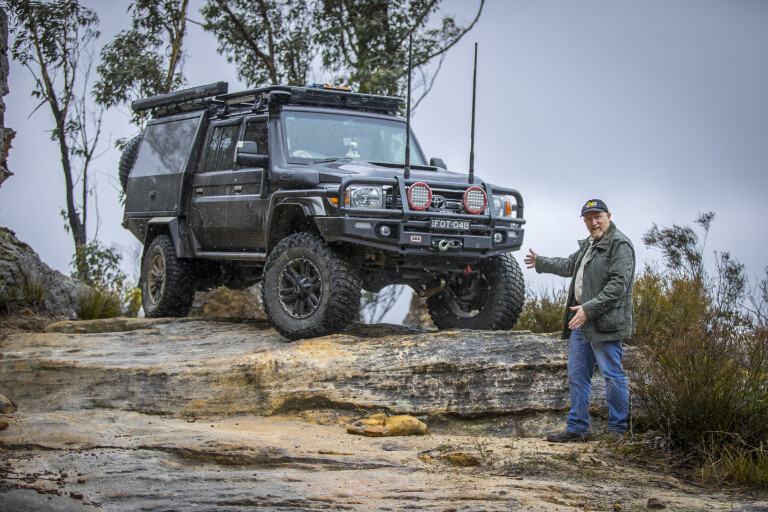
Diff housings are also susceptible to damage when driving in rocky terrain. There are a couple of options when it comes to protecting your vehicle’s diffs; the standard housings can be replaced with stronger aftermarket items, or diff guards can be fitted over the OE housings. Fuel tanks and water tanks (where fitted) can also be damaged when rock driving, so if they hang low and look vulnerable, ensure they are also adequately protected by appropriately positioned bash plates.
The sills of your vehicle are also susceptible to damage when driving off road, even if your vehicle is fitted with factory side-steps. In fact, the side-steps on many modern vehicles are manufactured from thin aluminium or plastic, and while they might support your body weight when you step inside, they will not support the weight of the vehicle when it lands on a rock.
Not only will the side-steps themselves be damaged, but they will offer little protection for the under-door sills. The solution is to fit a set of aftermarket steel-tube side-steps, or, even better, some rock sliders. If you opt for side-steps, make sure they are well-designed and engineered, with an underside profile that maximises ground clearance and several attachment points to the vehicle’s chassis. Well-engineered rock sliders will be able to support the full weight of the vehicle and won’t ‘catch’ on obstacles as they slide along rocks when driving off road.
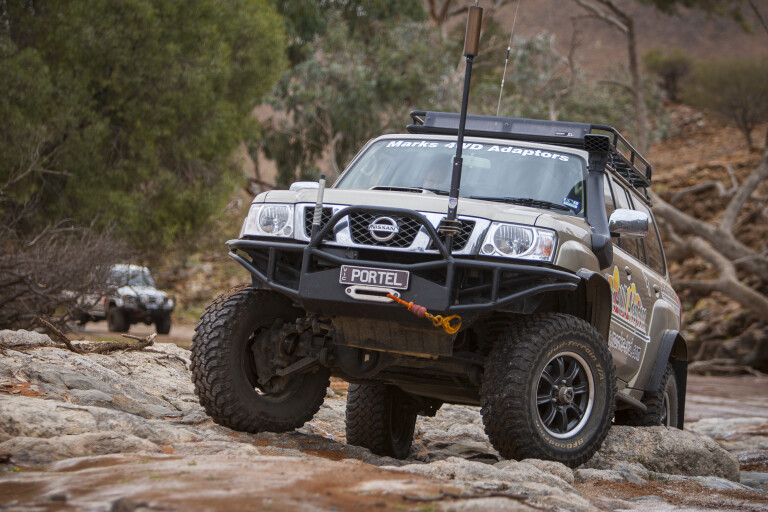
No matter what style of frontal protection you go for, ensure the bar has a profile that will maximise the approach angle of your 4x4. Most bars are designed with wings that angle up at the sides, providing greater clearance at the steering wheels while maintaining protection in the centre of the vehicle, as well as a place to mount a winch. Bars made from steel offer the best protection when rock crawling, and while some alloy bars are able to cope with big hits, most have a steel subframe so are almost as heavy as a steel bar anyway.
Many modern 4x4s have long rear overhangs, especially utes, and standard bumpers are pretty much ready for the scrapheap after their first off-road foray. There are plenty of aftermarket rear bars to choose from and, like the front bar, opt for a steel rear bar that is designed to maximise ground clearance.
Oh, and if you’re about to order a new 4x4, avoid ticking the towbar option when you’re on the website’s vehicle configurator; some OE tow bar designs are horrendous, and not only do they look awful but they compromise the vehicle’s departure angle. There are plenty of well-designed aftermarket options on the market.
Vehicle set-up
As soon as you head off road, the first thing you should do is to set your vehicle’s tyre pressures. The correct pressure for rock driving will depend on several factors, including the terrain type, the weight of your vehicle and the kind of tyres fitted. Assuming your rig wears quality LT tyres and you run them at 35psi on the road, for driving in rocky terrain you will want to lower pressures to around 22 to 28psi.
Lowering tyre pressures offers several benefits: it results in a longer tyre footprint, which means more traction; it allows the tyres to conform to uneven terrain, which minimises the chance of impact damage across the tread face; and it improves ride quality for vehicle occupants.
When running lower pressures off road, always be wary that the tyre sidewalls will be more susceptible to damage as they bag out, and there is even a chance you could peel a tyre off the rim if you make sudden and aggressive steering inputs.
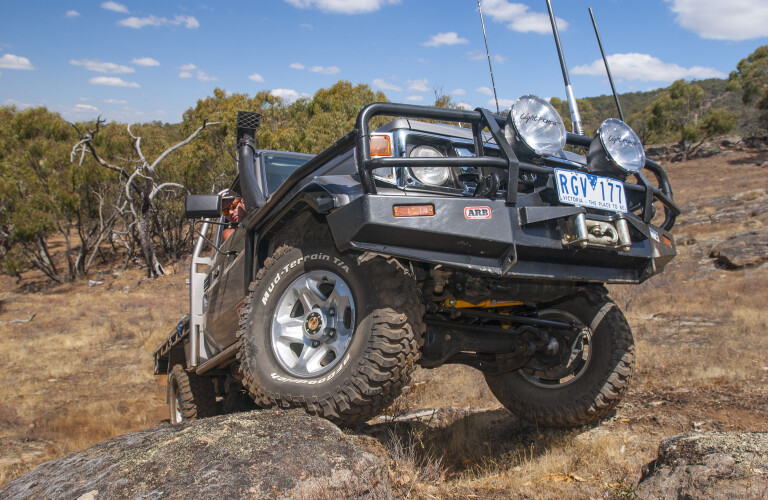
The next thing to do is to select the appropriate gear and the best traction aids for the terrain. If you are clambering over big rocks, you will want to do so as slowly as possible, so first gear low range should be selected; but if you need to climb a steep hill over shaly rocks, you might be better off in second gear low range so you can build and maintain momentum. Remember, you want to go as slow as you can and only as fast as you need to.
In challenging terrain, engage all the traction aids available to you. Bear in mind, however, that on some vehicles, engaging the rear diff lock will switch off the traction control, which can make it more difficult to climb over rocks if you exceed maximum wheel travel. So, if you’re struggling to climb over an obstacle with the rear diff lock engaged, you might want to try it without to see if that helps. If your vehicle is set up like this, you should consider fitting an aftermarket front diff lock.
Driving techniques
As mentioned, the key to successfully negotiating rocky terrain is to do it as slowly as possible, but in some circumstances you will need enough momentum to make it over rocks. With practice, you will discover the best gear to select and the best speed to drive over different types of rocky terrain.
Look well ahead when driving over rocks and plan your route. Also keep an eye out for an escape route if things don’t go to plan. In particularly tricky terrain, it’s advantageous to have a spotter outside of the vehicle who can keep an eye out for obstacles and direct the driver to take the safest route.

For the driver and spotter team to be effective, however, it’s vital they communicate clearly with each other, whether they are using hand signals, a UHF radio or a combination of both. Always have a chat before tackling difficult terrain to ensure both the driver and spotter understand and agree on signals.
The other advantage of a spotter is they can be used to clear obstacles and perform track-building duties when required. It’s vitally important the driver can always see the spotter, and the driver should stop immediately if the spotter can’t be seen. Do not resume driving until visual contact has been established and the spotter has given the all-clear.
If you get stuck
Sometimes things don’t turn out as envisaged, no matter how much thought and planning is involved. If you get stuck when driving over rocky terrain, you will obviously need recovery equipment to get out. If you are travelling with other vehicles, a snatch recovery might be a quick and safe solution; but if travelling on your own, you might need to do some track building to get out, using whatever is available whether that includes rocks and branches, recovery boards or a combination of those items.
A vehicle-mounted winch is an invaluable tool when rock driving, especially if you’re on your own, as is a high-lift jack, which can be used to lift a vehicle to manoeuvre it in to a better position, or to pack up the terrain under the wheels. Bear in mind that high-lift jacks are inherently unstable, so you really need to know what you’re doing if you use one. And never put any part of your body under a vehicle that has been elevated using a high-lift jack.
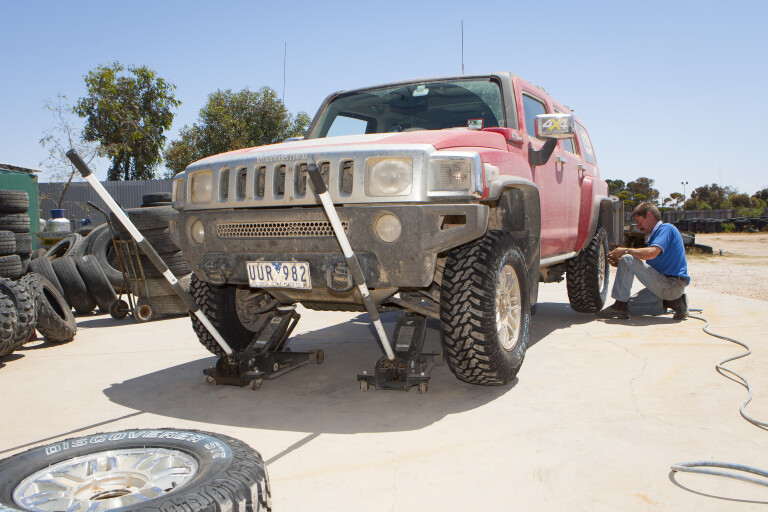
As well as recovery gear, you will need to ensure your vehicle is equipped with rated recovery points front and rear.
Tyre damage is common when driving in rocky terrain, so you should always carry a tyre repair kit, a quality air compressor and gauge, and at least one spare tyre. Also make sure your vehicle’s jack is in good working order and that you know where your wheel-changing tools are.
There are plenty of other things that can break when rock driving, so having the mechanical knowledge, the tools and the components to make trackside repairs will be advantageous. As will having a communication device that works when you are out of mobile phone range, such as a satellite communicator or a sat phone. And it’s not just vehicles that can be damaged in rocky terrain, so carry a first-aid kit, and know how to use it.
Bloody good fun
After reading this ‘How To’ instalment you probably think you’d have to have rocks in your head to go rock driving. Sure, rocks are hard on your vehicle and on your gear, but successfully tackling rocky terrain can be bloody good fun, and sometimes unavoidable depending on where you want to get to. However, with the right vehicle set-up, the right gear and a bit of knowledge, you too can become a rock star, so get out there and enjoy it.
Tyre markings
There is plenty of information moulded on the sidewall of a tyre. Here is what it means in the case of an LT285/70R17 tyre. For example: ‘LT’ stands for Light Truck; ‘285’ for tyre width in millimetres; ‘70’ for sidewall height as a percentage of tyre width; ‘R’ for radial; and ‘17’ for rim diameter.
Note that not all tyres marketed for off-road use have a Light Truck construction. It might look like a tough all-terrain or mud-terrain tyre, but if the sidewall marking says 285/70R17 without the ‘LT’ in front of it, the tyre is most likely a Passenger (P) rated tyre, with a light construction that will be more susceptible to damage when driving in rocky terrain.
Do
- Fit LT tyres and lower tyre pressures
- Fit lifted suspension and under-vehicle protection
- Survey terrain ahead and use a spotter if possible
- Drive as slowly as possible and only as fast as needed
- Carry tyre repair kit, compressor and recovery gear
Don't
- Drive too fast for the terrain
- Drive where you can’t get out again
- Proceed without clear communication with your spotter
- Drive if you can’t see your spotter
- Get under a vehicle that’s been elevated with a high-lift jack

COMMENTS